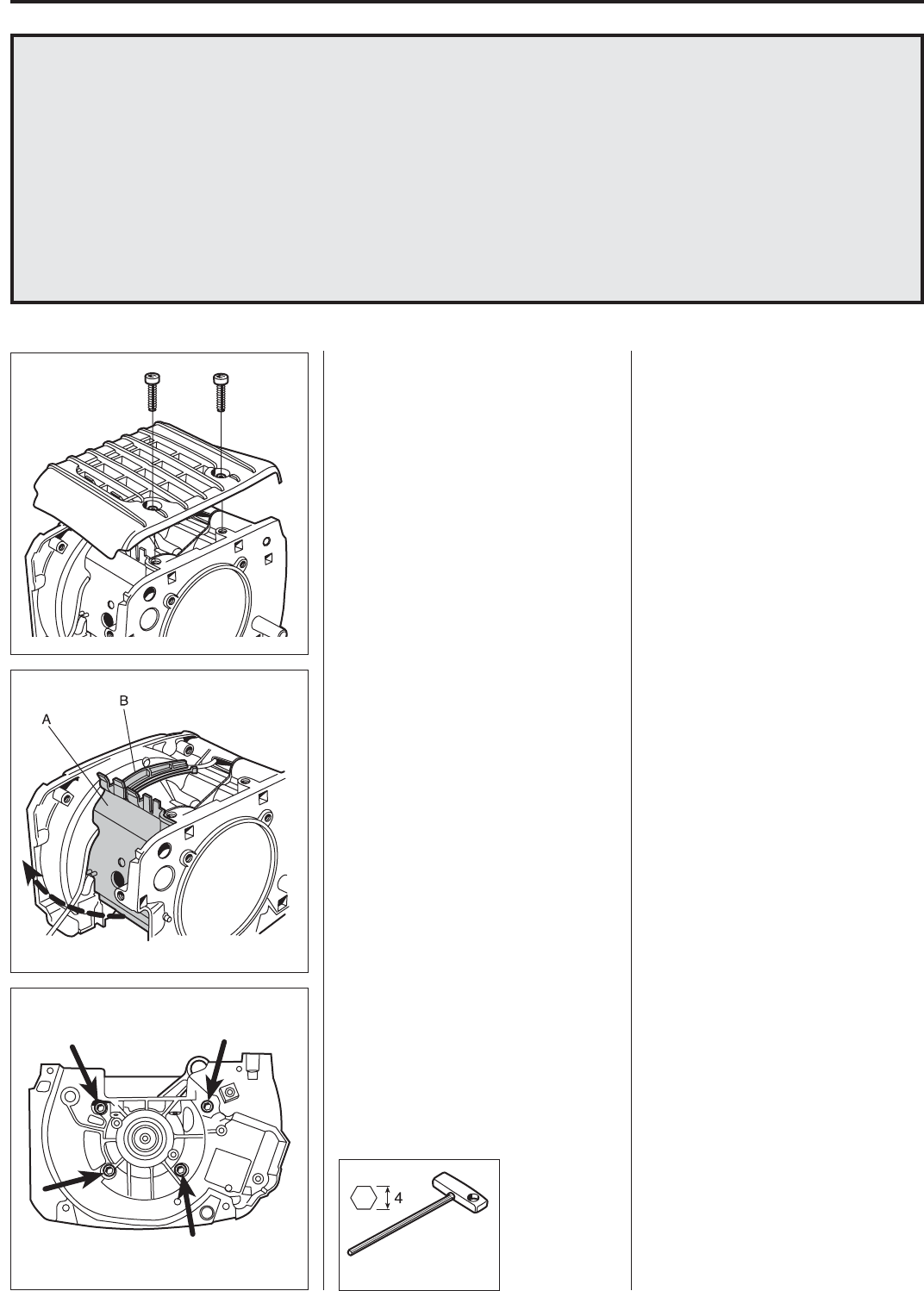
52
7
502 50 18-01
Crankshaft and crankcase
The crankshaft is journalled in the crankcase on
heavy-duty ball bearings. In addition to the journalling
point for the crankshaft, the crankcase acts as a
scavenging pump for the fuel/air mixture when this is
“sucked” from the carburettor and is forced into the
cylinder’s combustion chamber. The crankcase must
be perfectly sealed so as not to affect this pump
function. There cannot be any leakage from the crank-
shaft, between the crankcase halves or between the
crankcase and the cylinder.
Always replace the sealing rings and gaskets when
servicing the crankcase.
The task of the crankshaft is to transform the reciprocating
motion of the piston to rotation. This requires a stable
design withstanding immense pressure and rotational and
bending strain, as well as high rotational speed. In addition
the connecting rod is exposed to large acceleration and
retardation forces as it moves between the top and bottom
dead centres. This puts special demands on the bearings
that must withstand quick changes in load. Moreover, the
bearing’s roller retainer must also cope with high tempera-
tures and friction. It is therefore extremely important when
servicing to check the roller retainer for cracks, wear and
discolouration caused by overheating.
Dismantling
Dismantle all components so that only
the crankcase and crankshaft remain.
Dismantle the guard under the crank-
case.
Dismantling
Dismantle all components so that only
the crankcase and crankshaft remain.
See the respective sections for detailed
information if necessary.
Remove the 4 bolts and lift off the
guard from under the crankcase.
Bend away the heat guard (A) and
cable guide (B).
Bend away the heat guard (A) with your
fingers and carefully push the cable
guide (B) aside with a screwdriver.
Remove the 4 bolts holding the crank-
case halves together.
Remove the 4 bolts holding the crank-
case halves together.


















